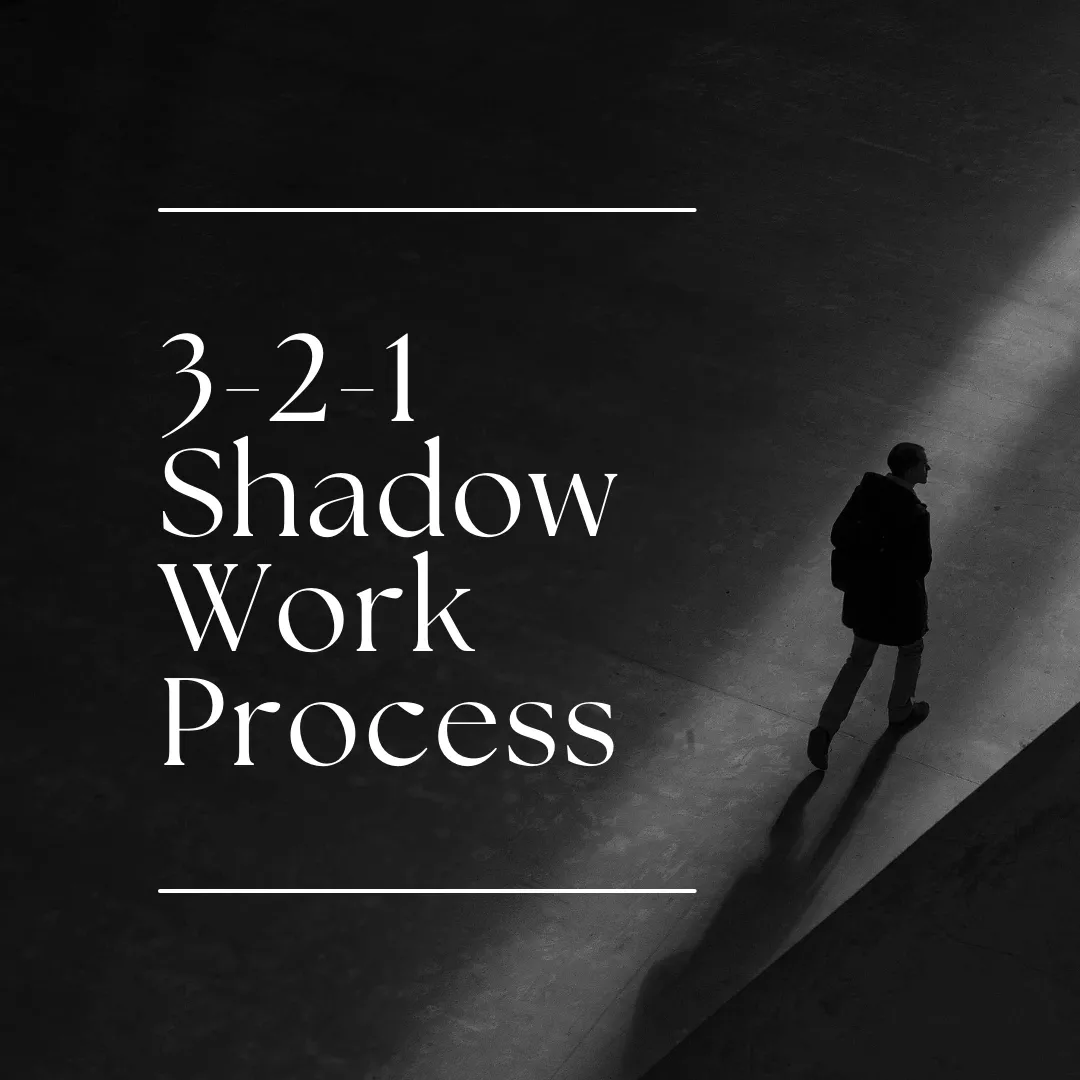3-2-1 Shadow Work Process
Summary - Ken Wilber’s 3-2-1 Shadow Work Process helps integrate disowned self-aspects through three steps: observing the shadow in third-person, dialoguing with it in second-person, and embodying it in first-person. This fosters self-awareness, emotional balance, and healthier relationships by addressing unconscious triggers and promoting personal growth.
A great starting shadow work exercise and practice is Ken Wilber’s 3-2-1 Shadow Work Process. It is a practical technique for integrating disowned aspects of the self. This process involves three steps: 3rd Person, 2nd Person, and 1st Person perspectives.
Here's a summary of each step:
1. 3rd Person (Face It)
In this step, you start by identifying and describing the shadow as an "it," an object or person outside of yourself. This involves observing and noting the qualities of the shadow without judgment.
Exercise:
Identify a person or situation that triggers a strong emotional reaction in you.
Describe this person or situation in detail, focusing on what specifically bothers you. Use third-person language, such as "he," "she," "it," or "they."
Example:
"He is always so arrogant and dismissive."
"That situation makes me feel powerless and frustrated."
2. 2nd Person (Talk to It)
Next, you engage in a dialogue with the shadow as if it were a separate person. This step involves personifying the shadow and having a conversation with it to better understand its perspective and motivations.
Exercise:
Imagine having a conversation with the person or situation you described in the 3rd Person step.
Ask questions and listen to the responses. Use second-person language, such as "you."
Example:
"Why do you always act so arrogant?"
"What do you want from me? How do you feel?"
3. 1st Person (Be It)
Finally, you re-own the shadow by shifting to the first-person perspective. This step involves becoming the shadow and experiencing it as a part of yourself. By doing this, you integrate the previously disowned aspect into your conscious awareness.
Exercise:
Take on the perspective of the shadow and speak as if you are it. Use first-person language, such as "I."
Express the feelings and thoughts of the shadow, acknowledging it as part of yourself.
Example:
"I feel powerful when I act arrogantly because I’m afraid of being seen as weak."
"I feel dismissed and unimportant, and that’s why I react this way."
Benefits of the 3-2-1 Process
Increased Self-Awareness: By facing, talking to, and becoming the shadow, you gain a deeper understanding of your unconscious traits and behaviors.
Emotional Integration: This process helps you integrate disowned parts of yourself, leading to greater emotional balance and authenticity.
Improved Relationships: Understanding and accepting your shadow can reduce projections onto others, leading to healthier and more empathetic relationships.
Ken Wilber's 3-2-1 Shadow Work Process is a structured yet simple method for addressing and integrating the shadow, promoting personal growth and self-acceptance.
About the Author, Dr Bren:
Dr. Bren Hudson is a holistic psychotherapist, life coach, and couples counselor specializing in Jungian depth psychology and spiritual transformation. With a PhD in Depth Psychology from Pacifica Graduate Institute, she integrates Jungian analysis, Psychosynthesis, and somatic practices to help clients uncover unconscious patterns, heal trauma, and foster authentic self-expression. Her extensive training includes certifications in Internal Family Systems (IFS), Emotionally Focused Therapy (EFT), HeartMath, Reiki, and the Enneagram, as well as studies in archetypal astrology and the Gene Keys. Formerly a corporate consultant, Dr. Bren now offers online sessions to individuals and couples worldwide, guiding them through personalized journeys of healing and self-discovery.
Connect with Dr. Bren:
FAQs
What is the 3-2-1 Shadow Work Process?
The 3-2-1 Shadow Work Process, designed and developed by Ken Wilber, uses structured exercises to help integrate disowned aspects of the self. The 3rd Person (Face It), 2nd Person (Talk to It), to 1st Person (Be It) steps help the participants to face and accept shadow aspects within their being.
What are the benefits of the 3-2-1 Shadow Work Process?
Increased self-awareness, emotional integration, and healing in relationships. When the shadow is integrated consciously, it reveals to you unconscious actions so that you can start changing the dynamics with others.
How can Dr. Bren help guide someone through the 3-2-1 Shadow Work Process?
Dr. Bren supports the client with a safe, judgment-free place to explore the shadow aspects through the 3-2-1 process. Jungian psychology is where she feels most at home helping individual consciousness deepen and a thread understanding as unconscious triggers and the integration of the self in denied parts.
What is shadow work in journaling, and why is it important?
Shadow work is journaling on those things that hurt inside the golden self or the hidden parts completely denied or shortly rejected. This poetic foray helps one bring the shadow into themselves, attaining acceptance and molding themselves to a better end.
How is Jungian psychology related to the 3-2-1 Shadow Work Process?
Jungian psychology develops a way of integrating those things that exist within the self, usually called the "shadow." The 3-2-1 process is very naturally aligned with the Jungian way of working because it asks that one face, dialogue with, and ultimately reintegrate these less-seen qualities for a more unified experience of self.
Need Help? Contact Dr Bren
Animate your Soul for Life!
Send me a message right now to get started on your soulful journey. Together, we will create a coaching plan that is unique and perfect for you.
DR BREN | Buddhist and Jungian Psychology
207 Wendover Ln, Durham, NC 27713, United States
Mobile +1 919-407-0999 Email Bren@drbren.com



